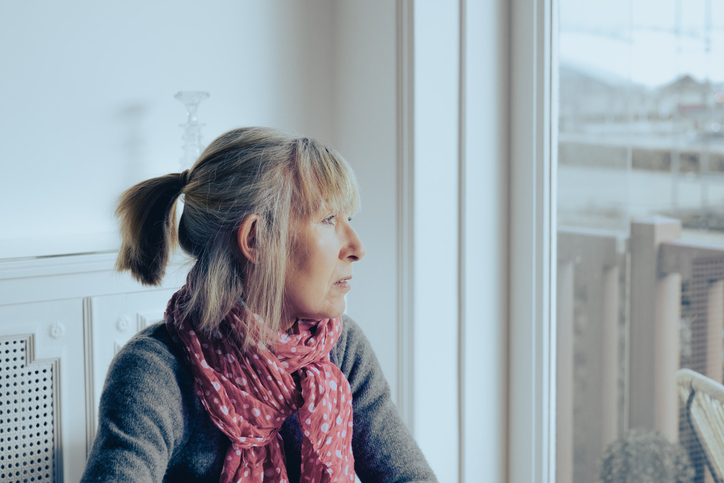Commitment + Clinical Leadership = Better Outcomes

What is Seasonal Depression?
Seasonal Affective Disorder (SAD) – also known as seasonal depression – is a type of depression that occurs due to a change in seasons. Usually, this disorder will begin around the fall and last during the winter months. However, it is possible for some people to experience this disorder during the spring or summer months, which is called summer-pattern SAD or summer depression, although it is less common.1
Seasonal depression is more than just feeling down or having the “winter blues” during the colder months. Many people will feel sad due to the shorter days and the snowy weather, but SAD will affect your everyday life. Those with SAD will feel depressed and incapable of carrying out their everyday activities.
Why do some people experience seasonal depression?
Seasonal depression is more than just feeling sad about being snowed in. When someone has seasonal depression, they will feel worthless and struggle to be happy. Depression will often require treatment by those regularly affected by it.
While there is no single known cause of seasonal depression disorder, the science behind this condition links mood changes to a chemical imbalance caused by shorter days and colder weather. This imbalance can change a person’s biological clock and circadian rhythm, which can cause seasonal depression.2 One of the chemicals responsible for these changes is melatonin, a sleep-related hormone that is usually produced when it becomes dark outside.3
How many people get SAD?
It is estimated that roughly 5% of adults in the United States have seasonal depression. SAD also affects more women than men, although there is still ongoing research to find out why this is. Usually, people who experience seasonal depression are between the ages of 18-30.4
SAD can be more or less common depending on where you live. For example, a northern state such as Washington will have more cases of seasonal depression disorder than Florida.5
Typically, SAD will affect those who have it for roughly 40% of the year. Many individuals diagnosed with seasonal depression will oftentimes also have other conditions such as anxiety disorder, panic disorder, an eating disorder, or attention-deficit/hyperactivity (ADHD) disorder.6
What are the symptoms of seasonal depression?
Some of the symptoms of SAD include:2,7
- Feelings of sadness, depression, hopelessness, and worthlessness
- Fatigue or tiredness, even when you are well rested
- Changes in appetite to crave carbs
- Weight gain from cravings
- Inability to concentrate
- Difficulty making decisions
- Oversleeping
- Withdrawal from friends and family
- Thoughts of death or suicide
In the cases where seasonal depression occurs during the summertime, the symptoms will be loss of appetite and sleep.6
Diagnosis for seasonal depression
If you think that you or a loved one have SAD, schedule an appointment with your doctor. They may ask you a series of questions to determine whether or not you have seasonal depression disorder or another mental health condition.
Typically, people who will have SAD:7
- Will have the symptoms listed above
- Will experience SAD for at least 2 years in a row during the winter
- Have depressive episodes that are more frequent than other episodes that may occur during the rest of the year
Treatment for seasonal depression
While it can be difficult and challenging to live with seasonal depression, luckily there are treatments available. Some of the treatments include:1
- Medication. Oftentimes, antidepressants will be recommended to those who experience seasonal depression disorder. A doctor may recommend that you begin antidepressants before the winter season to help decrease your chances of getting seasonal depression.
- Light therapy. Light therapy is when a patient sits in front of, or beneath, a light source. The light usually comes from a light box, which can come in the form of a desk lamp or a fixture.
- Cognitive behavioral therapy (CBT). CBT will be recommended to you if you are in need of professional help to change your behavioral patterns. CBT can help you learn ways to deal with stress, how to find meaning within your life, and how to change your negative thoughts to positive ones.
Before trying any of these treatments, please see a medical professional. They will be able to give you the proper instructions and let you know how to best treat your seasonal depression. You should also follow all the labels and guidelines on the packaging of any prescribed treatments for your safety.
Learn more about seasonal depression
If you believe that you or a loved one may have seasonal depression, contact a medical professional for a diagnosis. Your doctor will be able to give you the facts about seasonal depression and what steps you can take to live a happy, productive life.
Saber Healthcare is an organization dedicated to providing consultant services to long term care providers. This article is for informational purposes and is not meant to be seen as professional advice. Please consult with a medical expert before relying on the information provided.
Sources
- https://www.mayoclinic.org/diseases-conditions/seasonal-affective-disorder/symptoms-causes/syc-20364651
- https://www.psychiatry.org/patients-families/seasonal-affective-disorder
- https://www.hopkinsmedicine.org/health/conditions-and-diseases/seasonal-affective-disorder
- https://my.clevelandclinic.org/health/diseases/9293-seasonal-depression
- https://www.aafp.org/pubs/afp/issues/2000/0301/p1531.html
- https://medlineplus.gov/genetics/condition/seasonal-affective-disorder/
- https://www.nimh.nih.gov/health/publications/seasonal-affective-disorder
